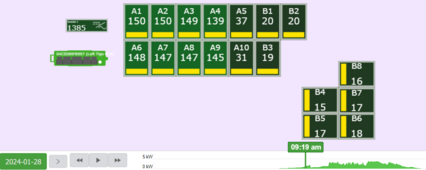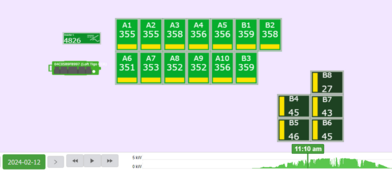EastCoastDIYer
New Member
Well, you're localish to me then I guess, if you're referring to the Orwell Bridge. Sadly I missed these posts and so missed my opportunity to pull 200KG of brick chimney off my roof in the middle of the night!Yep 60mph gusts tonight forecast for here and the local highway bridge is closed - good idea re the lasso, the winds are from the South-West so it will fall away from the PV panels nicely - should pass the SWMBO test
Possibly. At the time they were more concerned about String A being too big, rather String B being too small. I can't recall if String A was described as being a wattage or voltage concern, but for whatever reason, having understood the numbers better myself and done the maths, and the maths being backed up by various users in this thread (thanks guys!) I've realised that String A can have 13 and be safe, and String B can have 5 and always be above VMin in normal conditions. Looking at my Tigo's logs, for whatever reason, the voltage output on B is pretty consistent apart from in very low light when there's no meaningful current anyway.My theory on why they spilled over the two planes is that 5 is on the edge of minimum string length. As well it’s possible if 5s is on low end of MPPT TIGOs deciding to buck by 25% for no reason might make the string drop out.
My installer has agreed to re-wire B1, B2 and B3 onto String A. They were initially hesitant to do so as they weren't comfortable with a 13 panel string A being "close" to VMax, but with a little encouragement, they're going to do it.
I'm interested in seeing if String A optimising takes any longer in the morning to start working what with panels added to it from closer to the West Facing roof being shaded for longer. But whatever the result of that is, the flip side to that is that in the summer months in the evening, the West facing panels will all be in the sun and String A will be shaded, so I don't have to worry about B1, B2 and B3 dragging the rest of B down now. At worst, Swings and roundabouts, at best an overall better performing system.







